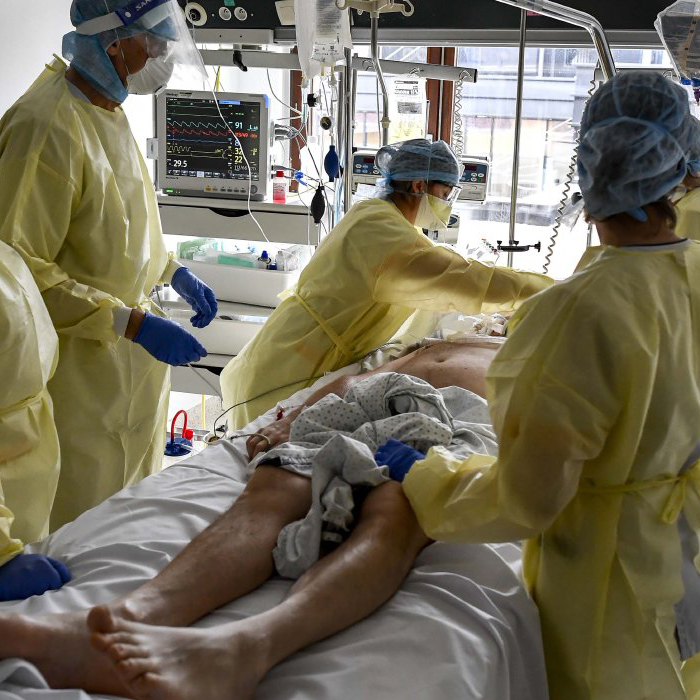Antwerp biotech company improves lung damage predictability using 3D scans.
By Pieter Haeck, reporter Belgian newspaper “De Tijd”. April 7, 2020
What is the prognosis for someone infected with the corona virus? Will the patient deteriorate quickly or not? The Antwerp tech biocompany Fluidda hopes to give healthcare professionals a better view of this using 3D lung scans.
Only a small percentage of people infected with the corona virus will experience the most extreme symptom: acute respiratory stress syndrome (ARDS), due to lung damage. The key question in the (bio) tech world is whether you can detect who is more susceptible to this at an early stage.
One of the companies at the frontline is Antwerp’s Fluidda. CEO Jan De Backer, an aeronautical engineer by training, has been researching lung diseases and how to visualize them since 2005. He has been supported by his father Wilfried De Backer, retired pulmonologist at the University of Antwerp. and a prominent investor is the 3D printing company Materialise.
Rapid deterioration
“Advanced visualization technology is needed to predict whether a patient is likely to deteriorate rapidly”, De Backer says on the phone from Los Angeles. “The human lung has a remarkable ability to compensate for existing damage, especially when measured with traditional lung function techniques”, he states.
This can cause someone to appear in a stable condition for more than a week, but then the patient suddenly deteriorates. The medical world must therefore do more than just rely on traditional CT scans, which provide a 2D image of the lungs. “That’s a one-size-fits-all solution.”
Three-dimensional
Fluidda developed a technology to examine lungs in a completely different way. “We are reconstructing the structure of the lungs three-dimensionally, while also looking at the structure and function of blood vessels and airways,” De Backer says.
If abnormalities are detected, for example in the blood vessel structure, healthcare professionals will be able to better predict whether a patient is susceptible to acute respiratory failure, and treat the patient accordingly. De Backer predicts that Fluidda will need another four to six weeks to make their technology “corona proof”.
Smoker’s lungs
Still, he is hopeful. The company has already used this technology for other lung diseases or interventions. This technology provided doctors with information about whether or not a body would accept a new lung after a transplant or help in the treatment of smoker’s lungs.
Can COVID-19 be compared to other lung diseases? The answer is yes, because at the final stage, there are comparable acute respiratory problems. “ The more you can prepare for this, for instance by detecting abnormalities in the blood vessels, the better it is”,says De Backer.
Second wave
The company receives CT data from hospitals from all over the world: from Pennsylvania, Cambridge UK , Singapore and of course also from Antwerp. De Backer is not afraid that the answers his technology can provide will be too late, when the first wave of corona patients has already passed.
This corona wave will continue for a while. In addition, the virus will cause long-term lung damage in some patients, which must be monitored. “But our technology must especially show its value in the second wave.” We will then have to be ready to be able to make more accurate prognoses.
The original article can be found here.

Categorised in: Miscellaneous / April 10, 2020 11:11 am /
Tags: biotech, Corona, COVID-19, lung